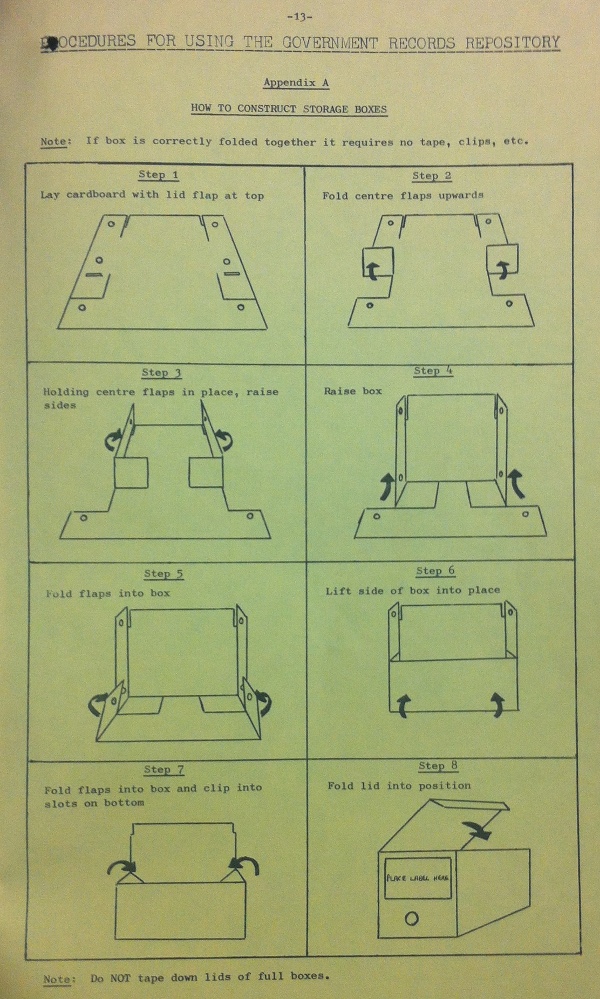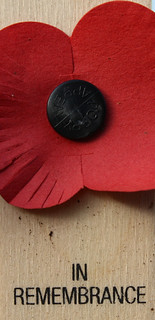The National Archives of Australia’s Mitchell storage facility has become so decrepit that tape is being used to hold down floor tiles which could contain asbestos.
Federal Parliament’s Public Works Committee heard evidence yesterday about plans for a new $92 million preservation facility to take pressure off the existing centre which is so full that it has been forced to stop accepting some classified documents.
Labor Senator Anne Urqhart noted during a visit to the Mitchell storage site that she had noticed at least one vinyl tile which could contain asbestos was being held down by tape and asked what plans were in place to ensure the safety of staff.
- Read more at the Canberra Times
Category Archives: Archives Made Easy
Grants for Community Archives in NSW
There are currently two grant funding programs with applications open to Community Archives in NSW.
1. Heritage Branch – Office of Environment and Heritage
Grants for Historical Research and Local Archives Projects
Project purpose
To provide funding to celebrate Australian local history. For local historical research by community groups and individuals that.
Examples of eligible projects
- For example Your local historical society wants to research a local history suitable for publication on World War One families focusing on sons and daughters for your town’s planned upcoming celebrations. You apply for a grant of $5,000.
- Your local historical society is planning to employ a consultant to develop a management plan for your community archive collection of photographs which will be implemented by your society. You apply for a grant of $5,000 to assist with consultant costs.
Amount
Funding Grants up to $5,000
Who can apply
- Individuals
- Community organisations
However, you CAN NOT apply for funding if you are a state or local government agency undertaking work as part of your statutory responsibilities (but you may be involved as a project partner to a community organisation, individual or business).
Membership or affiliation with the Royal Australian Historical Society is not required, but welcomed. Membership does not affect the assessment of the application.
CLOSING DATE – 20 July 2012
Visit the website of the Heritage Office for applications and further information.
2.Arts NSW Cultural Grants Program
(Administered by the Royal Australian Historical Society (RAHS) )
[This Scheme]…supports organisations undertaking projects with a lasting historical contribution to a community in NSW. Please download the new, applicant-friendly application form here.
CLOSING DATE – 20 July 2012
For further information please see the website of the RAHS
The more things change …. (classic advice from the Archives c.1979)
The more things change the more they stay the same! A couple of weeks ago I was given an old procedure manual for the Government Records Repository, State Records semi-active records repository, which dates from 1979. It comes complete with some not so politically correct hand drawn illustrations. However, the real gem is to be found on page 13 (significant?) which shares that classic rite of passage for all trainee archivists and records professionals…..how to fold a Type 1 box.
April 2012 – Link Roundup
Some handy links we have found online…….
Anzac Day 2012
They shall grow not old, as we that are left grow old:
Age shall not weary them, nor the years condemn.
At the going down of the sun and in the morning
We will remember them.
We will remember them.
Some archive themed Anzac links
Railway employees join the AIF
Nurses: from Zululand to Afghanistan
Hidden Stories: Acknowledging World War One Nurses as Soldier Settlers
March 2012 – Link Roundup
The link roundup post is back! Take a look for information about storage, crowdsourcing, digital archives and more.
Grant Applications open for indexing records of Forgotten Australians and Former Child Migrants
The Find and Connect Records Access Documentation Project will provide cash grants of up to $15,000 to eligible not-for-profit organisations to document, index and release records relating to children placed in Homes, orphanages and other forms of out-of-home ‘care’ during the 1920s–1980
Director, Alan Ventress, discusses the disappearing skill of reading handwriting
Some of you may be aware that the Director of State Records NSW, Alan Ventress, has been in the media this week discussing the subject of the disappearing skill of reading handwriting.
It all started with a letter published in the Sydney Morning Herald on Tuesday.
You wouldn’t read about it – they can’t
Not only can’t the under-30s write running writing, the number who can’t read it is growing exponentially (Letters, February 6).
Here at State Records NSW we have about 8 million individual items in the state’s archives, many of which were written in cursive script in the 18th and 19th centuries.
This was followed by three responses published yesterday.
History of literacy turns another page
Alan Ventress states that ”unless it is written in 12-point Times New Roman, younger users of the archives are unable to research Australian history” (Letters, February 7). That is patently untrue – they are also fluent in Arial, Comic Sans and, of course, txt.
Read more: http://www.smh.com.au/national/letters/rudd-will-just-bring-forward-the-demise-of-labor-20120207-1r5qa.html#ixzz1lpcYVKda
It remained a popular topic for letters again today.
In 13 years of schooling, Terry Funnell’s law student (Letters, February 8) had studied global warming but not cursive writing. I hope they taught him to swim.
At lunch time yesterday Alan Ventress was interviewed on the subject by James Valentine on Radio Station ABC 702 Sydney.
We spoke to Alan Ventress from the State Records about how people are struggling to read the old handwriting in the records and also took your calls on how the art of reading and indeed writing “running writing” is diminishing.
Long time readers of Archives Outside will also know that deciphering handwriting is a subject near and dear to our hearts. With your help we successfully crowdsourced a page with some handy tips and tricks.
QArchives – Christine Yeats
Well, I have always felt there is really no justification for investing a lot of resources and efforts into accepting archives in the first place, then arranging and describing them ….putting all that effort into looking after them if, at the end of the day, we don’t promote the use of the records.




![Captain Moonlite - NRS906 Special Bundles [Colonial Secretary] - 1880 Letters of Scott "Moonlight" and Rogan written while awaiting execution in Darlinghurst Gaol ([4/825.2]; microfilm copy SR Reel 2868, photocopy City COD291 p.204)](/wp-content/uploads/2012/02/Captain-Moonlight.jpg)